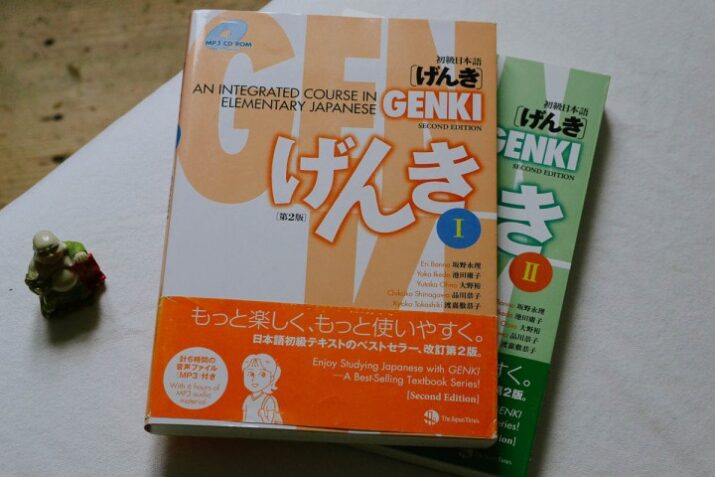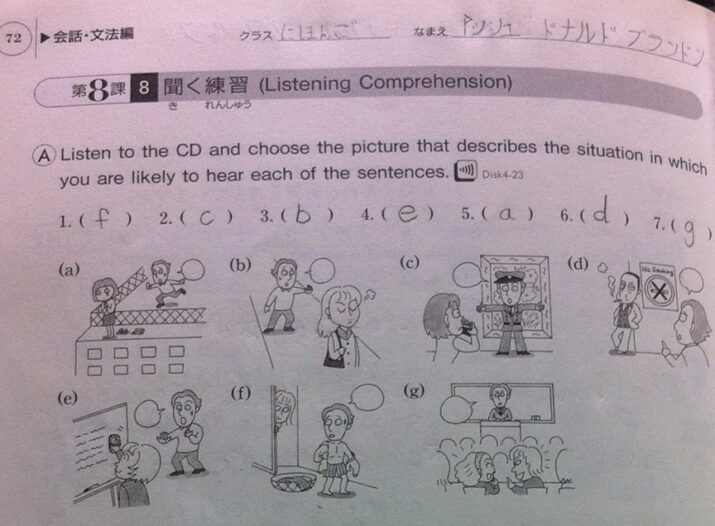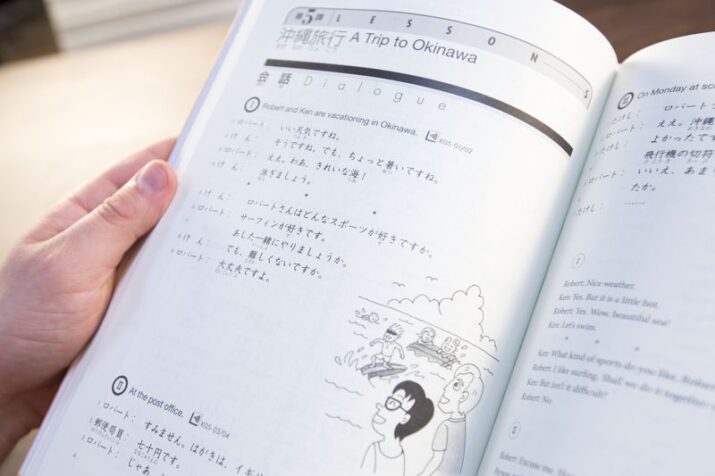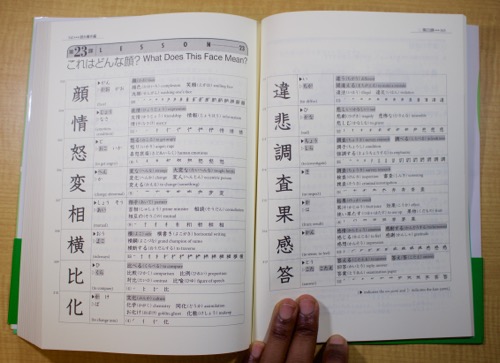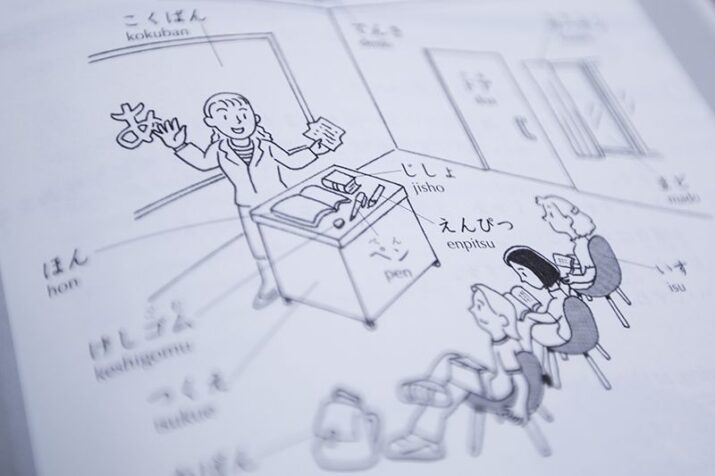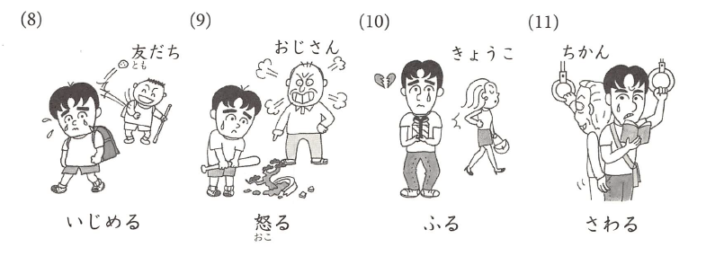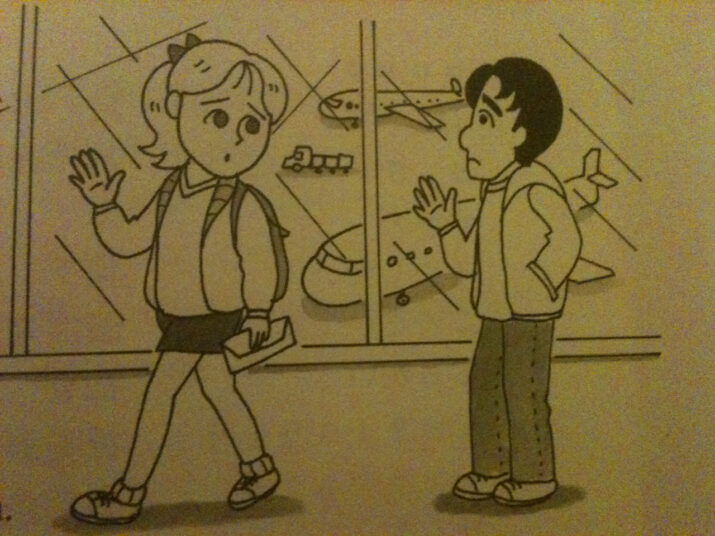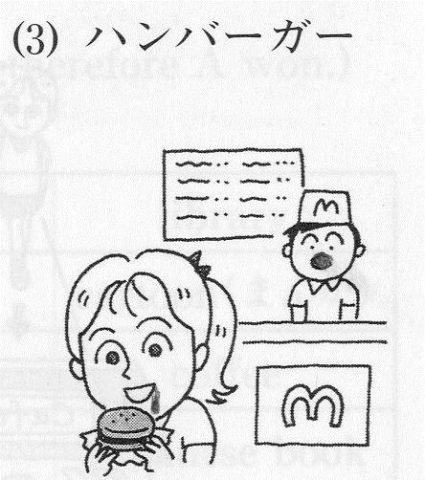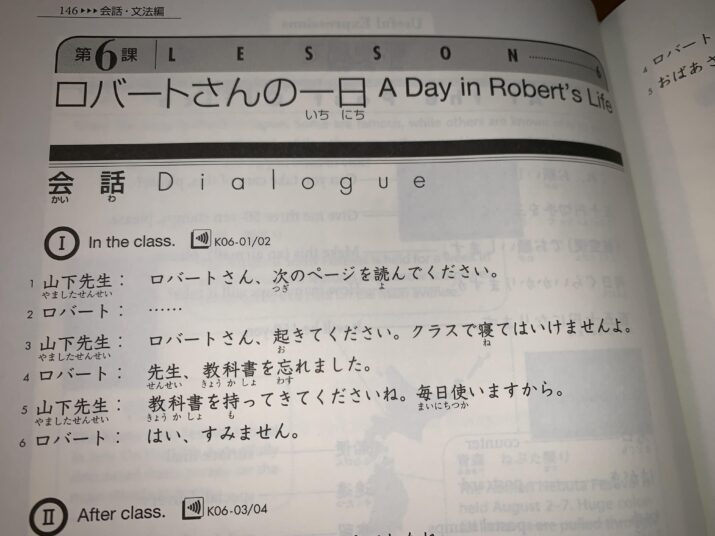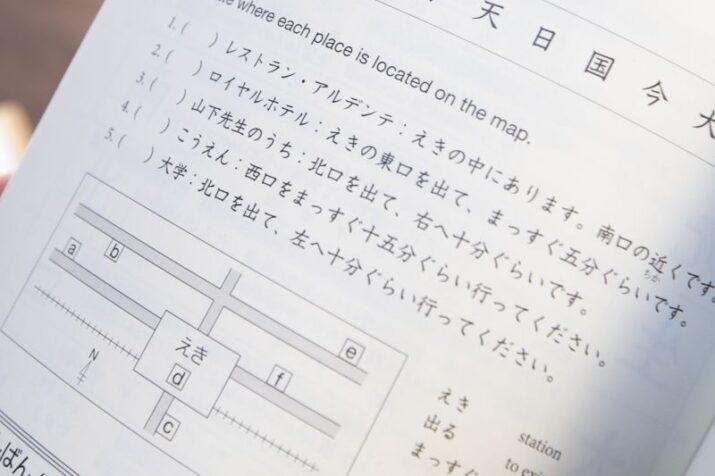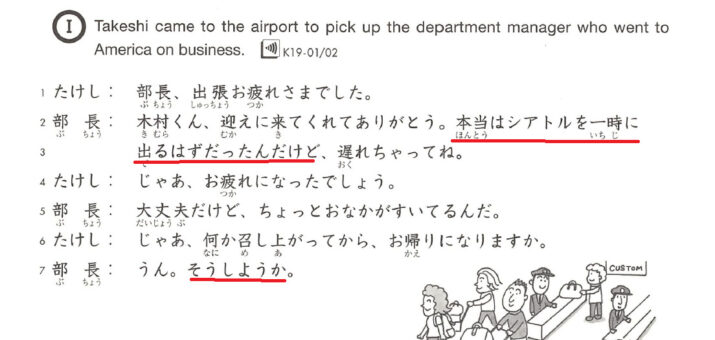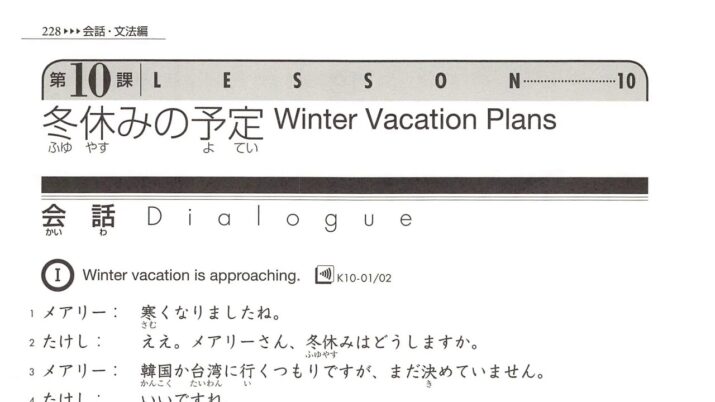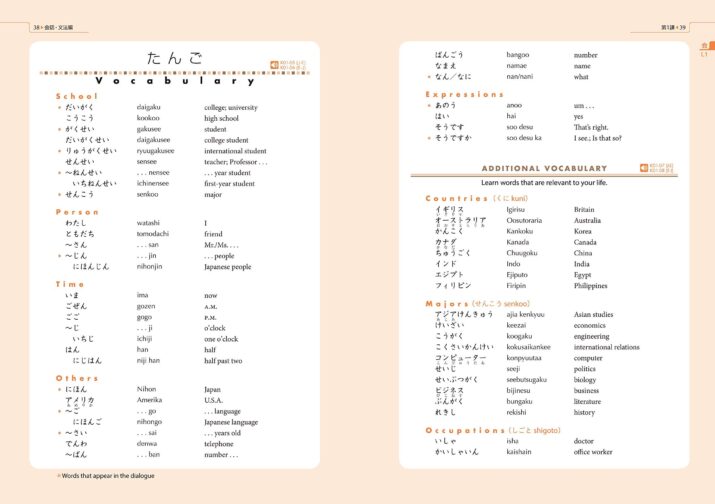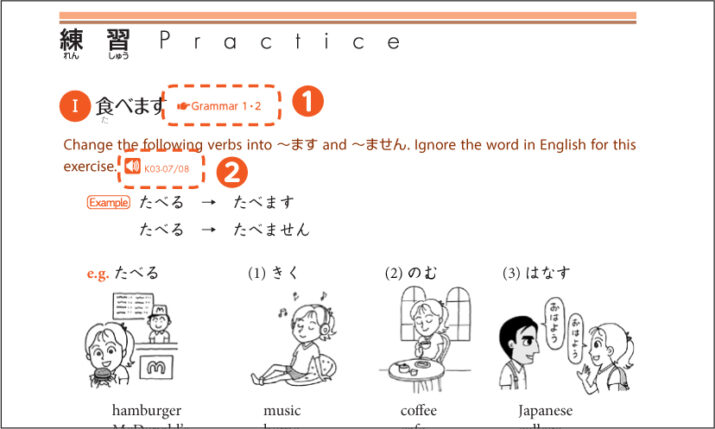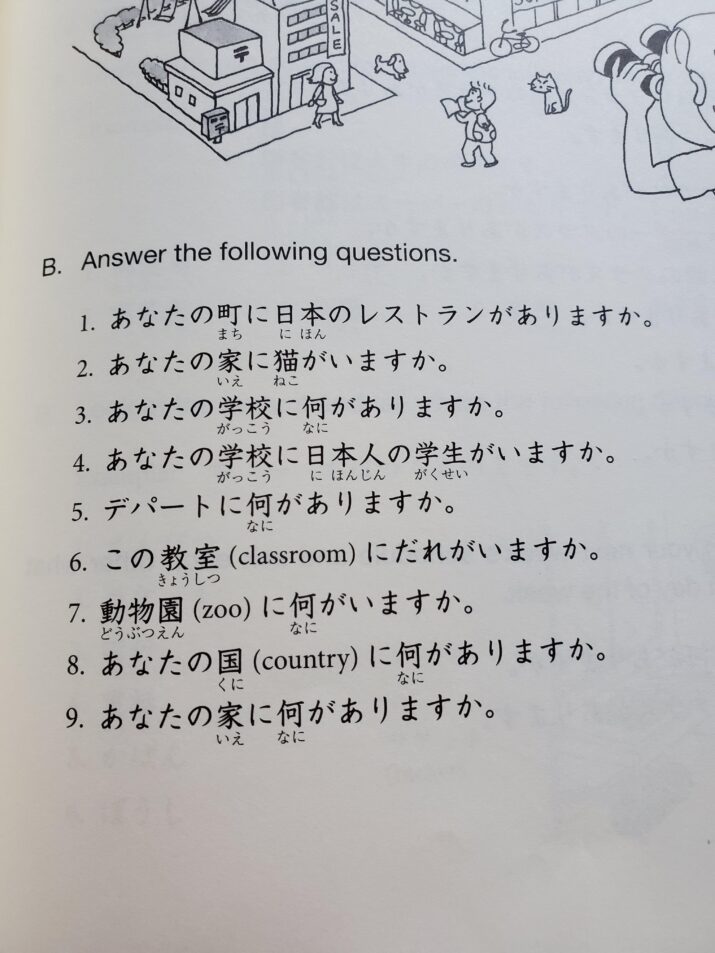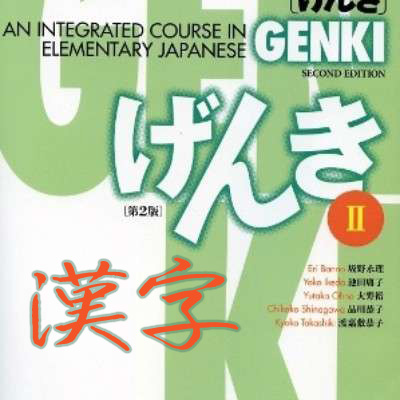Genki Textbook: Ultimate Review [2024]
By J Maver
January 10, 2024 • Fact checked by Dumb Little Man
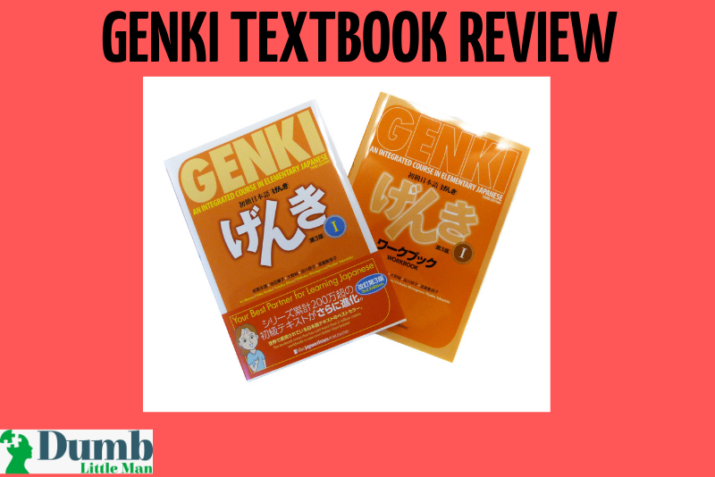
Eri Banno, Yutaka Ohno, Yoko Sakane, and Chikako Shinagawa are well-known authors from The Japan Times.
In the Elementary Japanese are textbooks written by them, a beginner in learning Japanese textbook published by the Japan Times.
This series textbook from Japan Times has a wide range of topics in elementary Japanese in Japan life like school, shopping, time, date, money…. in English
Additionally the textbook and workbook, Genki series offers workbooks (be sold on the side) that assist students in drilling, speaking, listening, reinforcing, and cementing which is super helpful for a beginner who wants learning Japanese language through grammar, explanations, exercises in the workbook.
Genki Textbook
What Is The Purpose Of Genki?
Image from meeraloveslanguages.wordpress.com
This chart will help you review and determine whether or not Genki textbooks will meet your requirements in learning Japanese language.
CLICK HERE TO READ MORE ABOUT GENKI TEXTBOOK
Genki is intended for:
- Absolute newbies in elementary Japanese
- Learners in the classroom
- Self-learners who are extremely driven
- A beginner who have attempted in learning Japanese but have been dissatisfied
- Those interested in taking the JLPT level 5 or 4 (N5 JLPT, N4 JLPT, N3 JLPT, N2 JLPT, N1 JLPT also available)
- People who desire to learn quickly
- People who are afraid of learning a new language
Genki is not suitable for:
- Travelers
- Self-learners who aren’t driven
- Those interested in studying kanji
Genki is designed for a beginner who desires in studying elementary Japanese.
If you wish to learn useful Japanese language terms for your trip to Japan, Genki will not be able to teach you the words you’ll need in a reasonable amount of time through its textbooks and workbook.
With the help of instructors and classmate students, beginners who use the Genki textbook will get the most out of it.
Why Genki is a perfect app for a beginner?
1. Genki Is Not Scary Japanese language book
Why do some Japanese residents refuse to study the language at all?
Japanese people may be quite frightening.
Genki is slightly a wonderful book for beginners when a beginner first started studying Japanese.
It’s one of the first book can the training features for beginners if you start creating a basic Japanese language from your self brain compare to other books.
2. Lesson Structure That Can Be Predicted
I enjoy how Genki lessons don’t throw any crazy curveballs at you when you’re beginners.
For the novice, each section has a clear expectation of what to expect.
Step by step, lesson after lesson, this regular framework improves and builds your Japanese abilities.
3. The Reading and Writing Section
Not only, 12 classes, each volume includes also 12 additional yomikakihen (reading and together writing section) lessons.
As a review, You may begin studying the fundamentals of hiragana, katakana (kana), and kanji in a practical method of Japanese grammar.
CLICK HERE TO READ MORE ABOUT GENKI TEXTBOOK
4. The Workbook of Genki
You could one day be able to completely express yourself in Japanese after this review.
Through easy Japanese activities in this workbook, the workbook courses allow your thoughts and ideas to be written. Here are some of the reasons why the workbook is so great!
- It encourages you to write about yourself — I love how this workbook asks you questions that make you think about Japanese in a familiar way to your life and let you give the answers for practicing Japanese.
- Monkey Toes – The Exercises Aren’t Sucky Nothing puts me off a book faster than boring, uninteresting, or dumb activities. Genki’s workbook is rather fascinating.
- It’s a Workbook with a Funny Side – Any workbook on hangovers, breakups, or even cutting class is right up my alley! It’s slightly serious Japanese.
Image from thejapanguy.com
- It’s Okay to Make Mistakes! – I can’t tell you how many mistakes I made while writing this book. Some of them I’ve fixed, while others I haven’t.
The benefit is that you can get a good indication of where your Japanese was and how much you’ve progressed by going back and re-reading.
5. The Genki MP3 audio CDs
This volume is the other good features of workbooks that are sold with good review and worth money.
Many of Genki’s intriguing characters are given voices in the early audio files CDs.
The Japanese language in these files of workbook in Genki is speaking for you to be listening at a pace that new students may listening to and get sounds without feeling like a fool .
Genki also utilizes an mp3 CDs , which is really interesting textbook (would you believe that some Japanese textbooks still use compact CDs?!?).
It’s crucial to be able to listen to music on your phone fast and effortlessly without links on the Internet.
Audio clips and examples pages in workbook like Textbooks I (Lessons 1–12) and Textbook II (Lessons 13–23) are separated into two volumes.
There are two sections in 2 volumes: “Dialogue and Grammar” volume and and “Reading and Writing.” volume.
Each textbook comes with a CD that contains six hours of MP3 audio recordings volumes.
Students are given time to speak the phrases in the Dialogue, Vocabulary, Kana grammar and Kanji Practice audio material, allowing them to study in listening, speaking and reading Japanese more successfully.
CLICK HERE TO READ MORE ABOUT GENKI TEXTBOOK
6. A Sense of Humor in a Book
Teachers who are stale. You know, the sort of instructor that might make you bored when you’re listening even if you take a nap before class. That’s not cool.
Fortunately, Genki is a textbook that makes learning Janpanese and activities enjoyable.
Some of the Japanese images will make you laugh out loud with its fun.
7. Genki Is Packed With Photographs
I believe that the visuals make Japanese much less scary with reading Japanese language through images. Also others like English and so on.
Large blocks of text and really serious reading passages should be reserved for upper-intermediate and advanced levels.
CLICK HERE TO READ MORE ABOUT GENKI TEXTBOOK
Content Of The Genki Textbook
Image from tofugu.com
1.Section On Conversation And Grammar
The majority of the material is devoted to conversation and grammar volumes.
It’s the main reason you bought Genki workbook for Japanese for Kanji Japanese in the first place as review in this page.
Genki is divided into 12 chapters or “lessons,” in volumes, each of which teaches grammatical elements dialogue and includes activities to help you remember what you’ve learned.
The following is a list of every idea of volume Genki I teaches:
Introduction to the Japanese Writing System
Greeting includes:
- New Friends
- Shopping
- Making a Date
- The First Day
- A Trip to Okinawa
- A Day in Robert’s Life
- Family Picture
- Barbecue
- Kabuki
- Winter Vacation Plans
- After the Vacation
- Feeling Ill
You’ll note that the chapter titles in each section don’t necessarily represent what you’ll study. Instead, they describe what is going on with Mary and her companions.
Instead of forcing grammar points into artificial “categories,” the writers can teach them in the sequence they desire.
If you have an English or Japanese instructor, he or she should be the one to categorize your work. If you don’t, it’s not a problem.
It’s less necessary to understand the “categories” of grammar ideas than it is to learn how to apply them effectively.
CLICK HERE TO READ MORE ABOUT GENKI TEXTBOOK
2.Section On Reading And Writing
Two volumes: Reading and Writing volume come after Conversation and Grammar volume.
Section Conversation and Grammar chapter has a corresponding Reading and Writing chapter. Each part has twelve chapters, for a total of twenty-four.
Section Reading and Writing chapter covers 14-16 kanji and includes a variety of writing activities to help you improve your abilities. Later on, we’ll go over that part in greater detail.
CLICK HERE TO READ MORE ABOUT GENKI TEXTBOOK
The Style Of The Genki Textbook Series
Image from thejapanguy.com
The purpose of the Genki textbook series are not to amuse. Genki is workbooks for teaching Japanese. The aesthetic volumes keeps you interested without detracting from the instructional goal.
The activities and courses are entirely in English. Other Japanese textbooks and books “immerse” you in the language by giving you directions in Japanese as review links page.
To comprehend what is being taught, learning Japanese in your original language is necessary.
Otherwise, you will misunderstand instructions and perform poorly throughout practice.
Genki’s writing is really succinct. The stated information of Genki is all that is required to begin comprehending the grammatical point in English.
There are no long explanations to confuse or lull you to sleep.
Keep in mind that Genki is a basic Japanese textbook. The explanations are designed to help you rapidly apply grammatical ideas.
Once you’ve finished Genki I book and Genki II book, you’ll need more books and materials to dive deeper, like the series of Dictionaries of Japanese Grammar book are sold would give you good answers and price.
The wording and sentence-style are casual. The instructional tone, opposite, is practically non-existent.
You won’t lose time reading anything superfluous.
However, writing in a casual tone provides the impression of being “down to earth.”
CLICK HERE TO READ MORE ABOUT GENKI TEXTBOOK
Genki Illutrations And Art in English
Image from tofugu.com
One of the game’s strongest points is artwork of series Genki. It wonderfully complements the courses and activities while being unobtrusive.
Some textbooks use flamboyant manga-style graphics to entice consumers. However, most of these books fail because the aesthetic is more appealing than the content.
Genki is clear about what it wants to be, and the art style reflects that.
To be honest, I was first conflicted about the painting. The drawings would occasionally enchant me.
Sometimes there’s a lot while some there’s not.
Image from reddit.com
The major characters in the Genki textbook are more iconic (left side), but the unnamed “supporting cast” (right side) has slightly more expressive characteristics even though there’s a reason behind this.
The reader is represented by the major characters in Japan. The less visual clarity they have, the easier it is to imagine oneself in their shoes.
And as you continue to study, this is precisely what happens.
You spend a lot of time with the work, even if you don’t find it very intriguing at first.
Your time and effort translates to a relationship with many fields in Japan like the art, and by proxy, the major characters, because the spirit and purpose of the art are so intimately connected to the content.
Image from gaijinsenpai.tumblr.com
Genki, of course, offers Mary a respite from her iconographic duty by engaging her in a variety of activities.
Mary gets to perform all sorts of interesting things in practice activities, which help to fill out her character. And as you learn, your relationship with her makes you feel more complete.
Even if you take a little to warm up to Mary and Takeshi, the sub-characters’ emotions will make you laugh and help you connect with the pictures.
Image from learnjapanesevideos.blogspot.com
I understand the changes in design between main and non-primary characters are minor. The series Genki’s general artistic style is consistent and homogeneous.
It’s one of those rare charming illustrations that doesn’t try too hard to be cute. It is what it is, and you will be charmed by its sincerity.
Overall, the visuals do a fantastic job of connecting you to the content and assisting you in language studying. Without these, the series Genki textbook edition would be incomplete.
If you don’t like the art at first, you’ll quickly forget about it as the immersive content draws you in.
CLICK HERE TO READ MORE ABOUT GENKI TEXTBOOK
Teaching Progression In The Genki Textbook Series
Image from reddit.com
In many respects, Genki fully embodies the “+1 concept” that Koichi has previously discussed.
You wish to work on something that is +1 level higher than your present level of skill. +2 or more will need more work or will be beyond your reach.
However, learning “what comes next” necessitates continuously building on previous knowledge resource.
Putting up enough effort to learn, but not so much that you want to give up.
It’s a difficult balancing act. How can you know what ability level is +1 higher than your present one you can get?
How do you tell when you’re putting in too much or too little effort? This is an issue that Genki addresses.
You’ll always be on track if you stick to the Genki textbooks series resource.
It teaches you what you need to know while also trimming the fat.
The lack of romaji is the finest illustration of this. To teach students adequate time to get master hiragana and katakana, the first two chapters include romaji (a few hours is all you need).
After that, the romaji is dropped, and Genki compels you to continue.
Genki should have treated furigana the same way he did romaji, progressively reducing it. Furigana is used for every kanji throughout the book.
This serves as a crutch, obstructing any possible kanji reinforcement that could occur as a result of reading and grammatical activities to practice Japan language.
Even a planned reduction of furigana, eliminating what the reader should know by a certain point, would have sufficed.
You’ll need to go back after finishing Genki I and II books series to discover the intricacies that the series skips.
That, though, is a positive thing. The Genki series textbooks does not waste your time by teaching you how to conjugate verbs in every possible way at the same time.
It provides you with enough information and examples to keep you going forward. Instead of fullness, you get efficiency.
CLICK HERE TO READ MORE ABOUT GENKI TEXTBOOK
Features Of The Genki Textbooks
Image from reddit.com
The Conversation and Grammar section’s chapters have a consistent key format.
Each chapter will provide fresh material, but you’ll always know how to approach it. Except for the target information, there are no surprises.
This is useful for getting into a study routine.
Each lesson will cover in the following order:
- Dialogue
- Vocabulary
- Grammar Explanations and
- Practice
Breakout boxes of information are inserted within the main portions of each chapter. They are as cover:
- Notes on Expression
- Notes on Culture
- Expressions That Are Beneficial
The Dialogues
Image from youtube.com
The conversations of Genki are the initial encounters with fresh material. Three (or more) Japanese conversations will appear initially.
The conversations are then translated into English.
Starting to read entire sentences of new resource before seeing a vocabulary list or grammatical explanation may seem illogical. However, there’s a reason behind.
The conversations consist 2 volumes:
You’ve previously examined some information.
You’re going to learn something new.
You must refer to the equivalent English translation if you do not turn the page to reference the vocabulary or grammatical explanations.
As you begin a new lesson, a little difficulty is a fantastic way to get your brain going.
Of course, if you move forward to the vocabulary and grammar parts, none of this applies.
While introducing new concepts, each discussion solely leverages concepts from prior lectures.
Characters who return and a tale that continues in the dialogues demonstrate inventiveness.
Despite the simplicity of the stories, you will find yourself finding connections with the characters and events, it accompanying learning Japanese language more fun.
When you grasp what you’re reading, you get a sense of success.
There are few curveballs since they are written in conventional and polite Japanese learning language.
Image from reddit.com
All of the scenarios are collegiate in nature in Japan life.
You get to know Mary and Takeshi throughout the course of the series.
Mary is a student on an exchange program in Japan. Takeshi is a college student from Japan.
They meet, go out on dates, and eventually fall in love. Various B-stories take place in between their love A-story.
CLICK HERE TO READ MORE ABOUT GENKI TEXTBOOK
Vocabulary List
Image from amazon.com
The hiragana, kanji, and English translation columns in the vocabulary list are separated.
This is ideal for those old-fashioned cram sessions where you have to cover a lot of columns in a short amount of time.
Keep in mind that some of the language used here may differ from what you’ll find in other book or resource.
Be mindful of the many titles if you’ve learned these topics from previous books or classes.
The terminology feels random or unorganized, according to a couple of Genki textbook reviews.
I do agree that each list has a few unusual vocabulary terms.
However, the “most utilized” may be quantified. That should give you a good sense of which words and types of words to teach initally.
It demonstrates an emphasis on teaching lexicon through conversations.
It can teach vocabulary that fits into discussion settings rather than the most often used (or helpful) terms.
In both Genki volumes, there are 1700 words in total.
This is a fantastic start, which is what the Genki series is all about. They will serve as a basis for your lifelong Japanese learning language studies.
Finally, for grammar, you’re utilizing the Genki edition textbook.
Learning vocabulary is a difficult task in and of itself, and no textbook can replace it.
Learning the Genki vocabulary words so you can understand the grammar it teaches.
However, to get the vocabulary you need to know, augment with spreadsheets full of Japanese lesson language learning.
CLICK HERE TO READ MORE ABOUT GENKI TEXTBOOK
Explanations Of Grammar
Image from genki3.japantimes.co.jp/en/intro/
Genki edition textbook series believes that you will become an advanced Japanese user at some point throughout your lifetime language learning journey which very useful for a beginner.
This implies that whatever specifics they don’t teach right now, you’ll get afterwards in lesson.
Their goal is to provide you with just enough information and example to begin using the Japan language without overwhelming you.
It is anticipated that you would have a better understanding of the grammar through activities and the workbook in addition to the Japanese grammatical explanations.
It’s also anticipated that you’ll have an instructor who can provide more Japanese example and explanations.
As a result, the Japanese grammatical explanations don’t include many examples sentences.
CLICK HERE TO READ MORE ABOUT GENKI TEXTBOOK
Exercises In Practice
Image from slideshare.net
Without the exercises to back up Genki’s great grammatical explanations, they’d be nothing.
Exercises are varied enough to keep students engaged while being repetitive enough to emphasize essential topics.
If you put in the effort, these exercises and activities will help you to remember the Japanese grammar and vocabulary you’ve studied.
Even though most exercises have similar patterns, they are not formulaic. And lessons twists the framework to fit the target topic perfectly.
The pictures provide variety to the practice volume.
Rather than pages like text, questions, and charts, there are at least every other page like Japanese activities with images.
Genki will cover you if you’re a leaner like audio studying.
Select classes have audio icons next to them.
On the supplied CDs, there are audio files that match to these.
The audio components primarily consist of listen and repeat versions of the exercises, with a few songs thrown in for good measure.
While some readers may be tempted to skip them, they accompanying valuable listening practice.
It’s crucial to hear examples from native speakers, especially when you’re a beginner in studying Japanese language.
The Genki answer key, which is available as a separate book, may be worthwhile to purchase.
If you choose for the solution key, keep in mind that it was designed for teachers who are proficient in Japanese.
As a result, the entire thing is in Japanese and contains characters that you may not be familiar with.
As a beginner, this makes verifying answers considerably more difficult, but not impossible.
CLICK HERE TO READ MORE ABOUT GENKI TEXTBOOK
Section On Reading And Writing
Image from app.memrise.com
Kana is taught in the 1 two classes. It lessons focuses on hiragana, while the second focuses on katakana.
It’s wonderful, as I stated before, that Genki forces you to learn kana so rapidly. You can master both writing systems in a matter of hours using mnemonics.
The activities in the 1 two chapters will help you remember what you’ve learned.
The practice activities begin right away in Chapters 1 and 2. Again, it’s expected that you’ll be taught the kana by an instructor.
The kana tables on pages 24–26 must be used by self-learners. Under the front and back pages, there are additional kana charts.
Maps, Charts
Although there is no mention of radicals, the Genki books does slightly provide a “kanji combination” exercise that introduces the notion.
You’re given a set of kanji and instructed to mix them to make new ones. This exercise will put your kanji knowledge.
In this part, maps and charts are reintroduced as review on page.
The Price Of A Genki Book and Mina no Nihongo
Starting at the price of $48 of money per volume Genki when it is sold, accompanying with Minna no Nihongo, Nihongo is one of the most widely used Japanese textbook series are answers in review about the money.
The price is maybe the most common criticism about Genki and Mina no Nihongo.
The textbook costs $59.99 and the workbook costs $29.99 in the United States. The first volume costs around $90. (no sold with Mina no Nihongo)
If you’re purchasing Genki II at the same time, add additional $90.(no Mina no Nihongo)
Also if you like online shopping, you can check with links from On Amazon.co.jp is the links in English international people can shopping all over the world as review.
CLICK HERE TO READ MORE ABOUT GENKI TEXTBOOK
Conclusion
It’s ultimately up to you to determine whether Genki is the best fit for you. It’s ideal for use in the classroom.
If you’re considering about enrolling in a Japanese class that uses Genki, do it now.
It might also be useful for self-learners with some effort compare to other links in English online app for studying Japanese and it’s worth money also.
Hope that this review would give you some helpful answers for your consideration about this Genki textbook.
J Maver
Passionate in tech, software and gadgets. I enjoy reviewing and comparing products & services, uncovering new trends and digging up little known products that deserve an audience.

